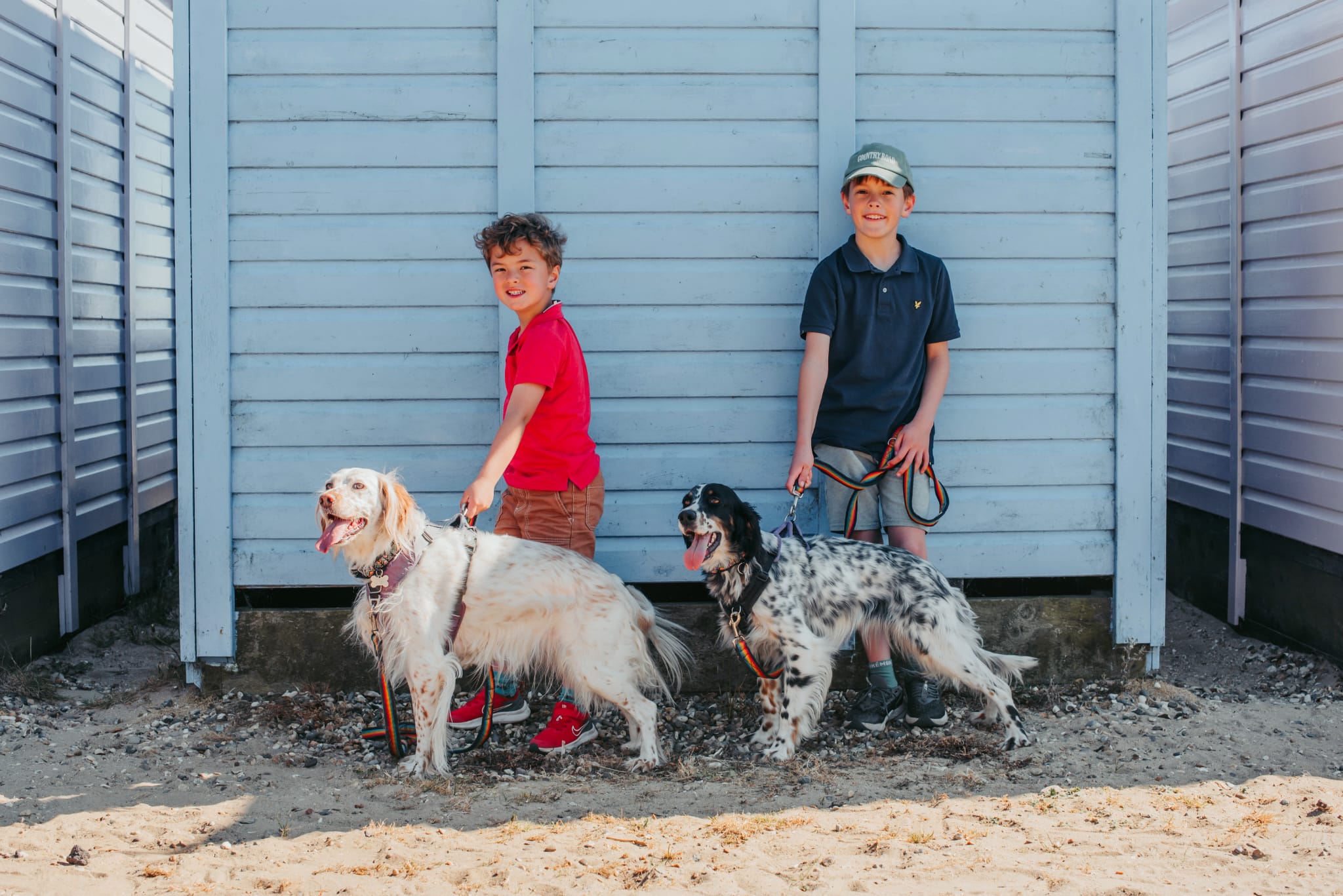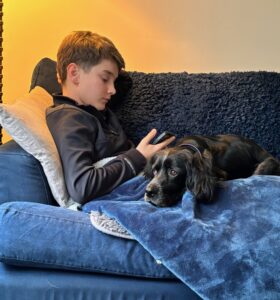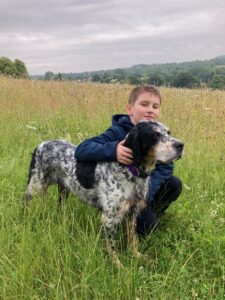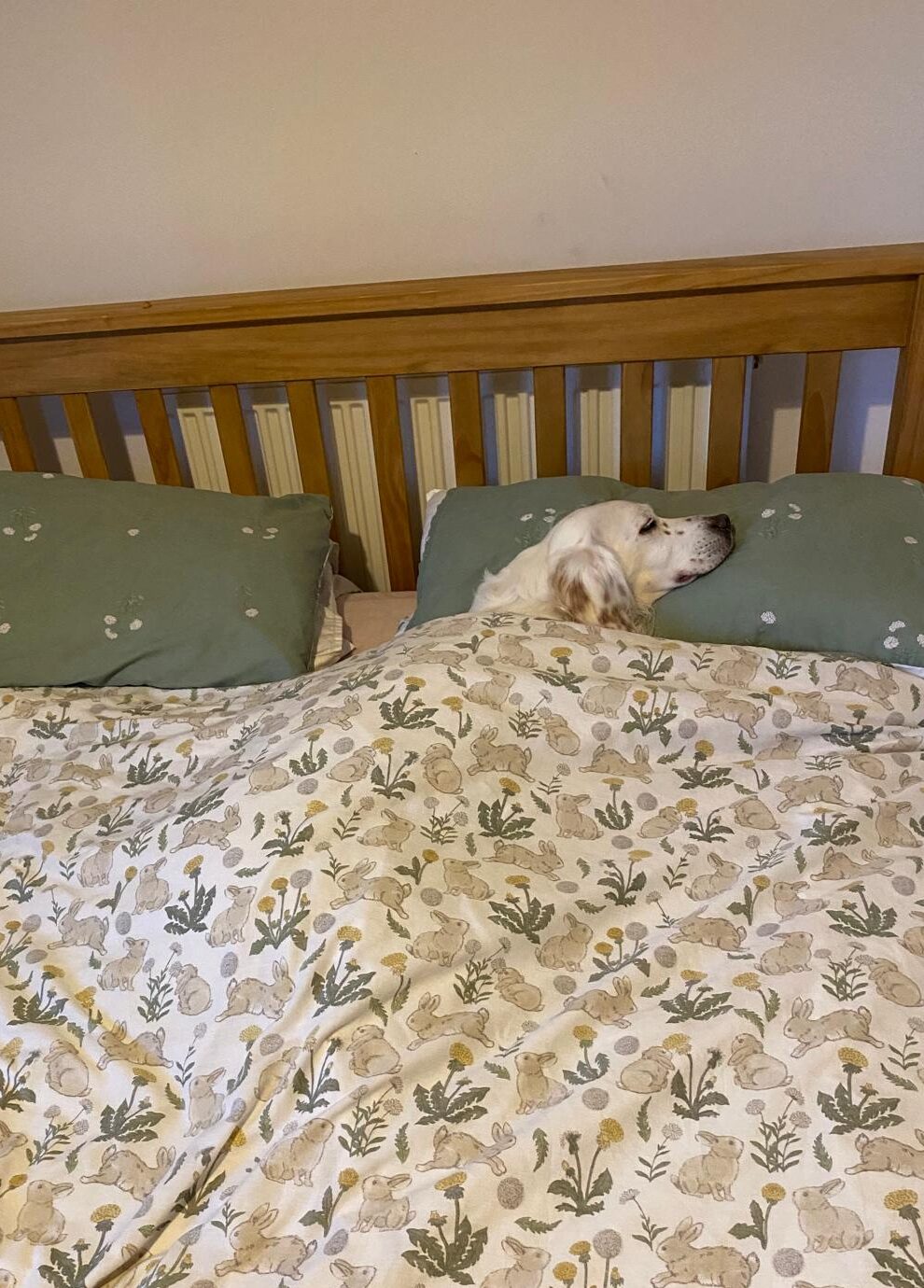Dogs and children can be great friends and having a dog can help children develop kindness, understanding and respect for living things. Dog companionship can improve a child’s social skills with people, while caring for a pet can encourage responsibility.
Children can quickly learn to treat the dog as part of the family, but it’s important that parents teach children how to stay safe around dogs, to protect both the child and the dog.
The majority of breeds that we rehome are known for being wonderful family pets, and with that comes the assumption they are great with children too.
Although we are careful when matching dogs to families with children, the dogs we help are not necessarily well rounded dogs who have been socialised with children from puppyhood and they will require extra patience and understanding.
Dogs need their own space, somewhere they can go to to get away from it all, somewhere quiet where they won’t be disturbed and they can feel safe. Often they will find that space themselves, probably in a really awkward place designed to trip you up like the bottom of the stairs!
What is just as important as a dog finding their place to retreat to is that children understand the dog’s need for that safe space, know when a dog shouldn’t be disturbed and learn some basic doggy body language.
All dogs will react if they are put in a situation they feel compromised enough in and it’s important to educate our children so we don’t push those barriers and everyone remains safe and happy.
It doesn’t matter the age of the children, older children can be overwhelming for even the most laid back dog whilst very young children can be unpredictable in their behaviour (particularly from a dog’s point of view) Shrieks of delight, tantrums and boisterous play (if you have a toddler you’ll understand) can be an exciting or a frightening experience for puppies and dogs.
You will need to show young children exactly how you want them to behave with your dog, by encouraging gentle interaction at all times. Even if your dog appears to be fine with things like more hands on contact, never assume that they are enjoying it or will always be so tolerant. Many dogs will put up with a great deal before showing any obvious behaviours that they are uncomfortable, and it’s just not fair or responsible to expect them to cope with boisterous play or rough handling. Even if your dog appears to be extremely laid back, think about how another dog your child meets might behave in a similar situation. Teaching a young child how to behave sensibly and considerately with your own dog will serve them well when they meet their friends’ dogs or a dog out on the street by keeping them as safe as they can be.
Things to avoid:
- bothering dogs when they are eating
- taking away a dog’s treats or toys
- putting your face right up to your dog’s face
- bothering your dog while they’re asleep or resting
- grabbing dogs’ tails or ears
- climbing on or trampling on your dog
- hugging – most dogs don’t actually like it
- screaming and shouting around dogs.
The RSPCA has some great guidance for children and dogs:
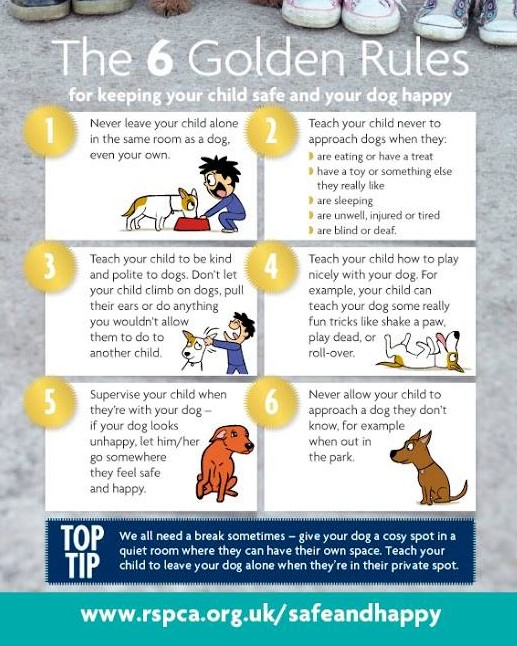
There are also lots of age appropriate books for children that can introduce, in language that they will understand, living with dogs.
Some body language to look out for that could mean your dog is feeling worried or stressed:
- avoidance, moving away, hiding
- tail tucked under, looking away
- lip licking, yawning (when not sleepy), paw raising
- growling, flashing teeth, snapping, biting

